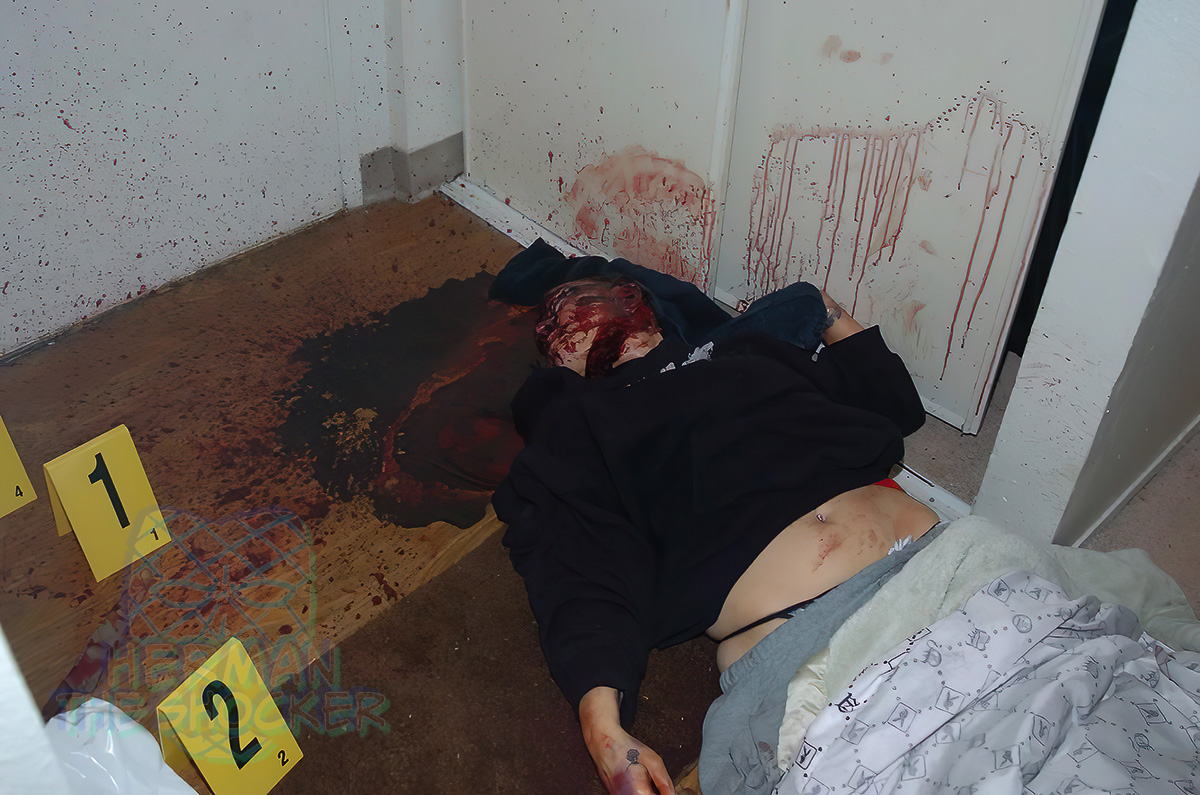King County, WA, USA. This woman was found dead at her residence. She has been stabbed multiple times in the face and neck. Blood spatter and pool of blood can be seen and the knife the perpetrator used. No further info about this case.
Bloodstains are classified into three basic types: passive stains, transfer stains and projected or impact stains. Passive stains include drops, flows and pools, and typically result from gravity acting on an injured body. Transfer stains result from objects coming into contact with existing bloodstains and leaving wipes, swipes or pattern transfers behind such as a bloody shoe print or a smear from a body being dragged. Impact stains result from blood projecting through the air and are usually seen as spatter, but may also include gushes, splashes and arterial spurts.
Blood spatter is categorized as impact spatter (created when a force is applied to a liquid blood source) or projection spatter (caused by arterial spurting, expirated spray or spatter cast off an object). The characteristics of blood spatter depend on the speed at which the blood leaves the body and the type of force applied to the blood source.
Cast-off – results when an object swung in an arc flings blood onto nearby surfaces. This occurs when an assailant swings the bloodstained object back before inflicting another blow. Analysts can tell the direction of the impacting object by the shape of the spatter (tails point in the direction of motion). Counting the arcs can also show the minimum number of blows delivered.
A crime scene where bodily injury has occurred is likely to have some amount of bloodstain evidence present; however, the amount will vary depending on the circumstances of the crime. The type of injury inflicted and the amount of force used will determine the volume and pattern of bloodstains:
- Sharp force injuries (stabbing) – these injuries are caused by an object with a relatively small surface area, such as an ice pick or a knife. Less blood is deposited on the instrument, resulting in a smaller, more linear pattern of stains.
- Blunt force injuries (hitting or beating) – objects inflicting this type of injury are usually larger, such as a bat or hammer. If the object impacts liquid blood, the larger surface area will collect more blood, producing drops of varying sizes.
- Gunshot injuries – mist-like spatter caused by bullets entering and exiting the body.
Latest posts









